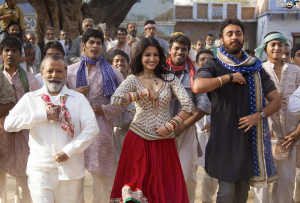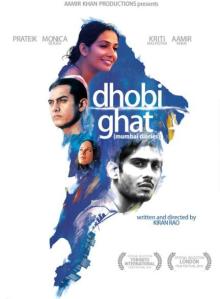 Vishal Bhardwaj has clearly earned his place in the Hall of Fame of Indian cinema! I would rate him as one of the most creative filmmakers that we have, and of course, he also is one of our best music composers (to begin with!).
Vishal Bhardwaj has clearly earned his place in the Hall of Fame of Indian cinema! I would rate him as one of the most creative filmmakers that we have, and of course, he also is one of our best music composers (to begin with!).
His latest creation, Haider, clearly bears his stamp of class. I have heard people say that this one is Vishal’s best work so far. I would personally not go that far, not because I can pick some other film that deserves that position, but simply because it is a tough call to make. Vishal has made many amazing movies, and Haider does rank amongst bis best works, but I would find it hard to give it a specific number 1 tag.
While the admiration for Vishal Bhardwaj is clear and total, another person that demands an even greater acknowledgement is William Shakespeare!! I have not read much of Shakespeare but of course, recognise his stature! After seeing Haider, I read up a synopsis of Hamlet and realised that Haider was so closely related to the original story. And that is amazing! Haider as a story, is very believable in today’s times, and yet, it’s inspiration was Hamlet, which was written by the Bard of Avon, who lived from 1564 to 1616!! A story written nearly 400 years back, continues to seem relevant in today’s times, is the absolutely mind-boggling fact to appreciate!
 And as I now relate to the other works of Shakespeare that Vishal has converted to movies, viz. Omkara and Maqbool, what comes out as a common ground, are the complex characters that he sketched. Tabu and Irrfan in Maqbool, Ajay Devgan and Saif Ali Khan in Omkara, and Shahid and Tabu here in Haider, play characters with extremely mixed and complex minds, and it is their behaviour that makes the very interesting story-lines.
And as I now relate to the other works of Shakespeare that Vishal has converted to movies, viz. Omkara and Maqbool, what comes out as a common ground, are the complex characters that he sketched. Tabu and Irrfan in Maqbool, Ajay Devgan and Saif Ali Khan in Omkara, and Shahid and Tabu here in Haider, play characters with extremely mixed and complex minds, and it is their behaviour that makes the very interesting story-lines.
Salute to the most amazing writer ever, perhaps, William Shakespeare, for writing such timeless beauties!
Having heard and read enough about Haider, I couldn’t wait longer than the morning of the first day of a long weekend, and landed up at a 9-30 am show! And as the canvas opened up, very early, I could sense a similarity with Gulzar’s Maachis, which incidentally was the Bhardwaj’s first major film as a music composer, in 1996.
A society ravaged by terrorism in the names of freedom struggle, the accompanying free hand to the army, and which creates its share of monsters and abuse, the disturbed youth and disturbed life in the region, the helplessness and resigned fates that people feel under the circumstances… all of these were seen in the Punjab of Maachis, and were felt similarly, in the Kashmir of Haider. Gulzar, Vishal and Tabu were the common factors in the two films, as were the snow filled winter mountains!
 Vishal does love to work with his ‘regulars’.
Vishal does love to work with his ‘regulars’.
I guess, Shahid Kapoor may do nothing for 3-4 years (or do some inconsequential stuff) before Vishal gives him a great film each time, and he should be happy with that state. After Kaminey, this is the next big one for Shahid with Vishal, and it is indeed, a tremendous, power-packed, central role. Subdued by the character, Shahid needs to bring out a range of emotions, and he does so quite brilliantly.
Tabu is another regular Vishal Bhardwaj favourite, and she is clearly one of the best actors we have. She picks and chooses her films, so we don’t see much of her, and it is always a pleasure to get those rare opportunities of seeing her on screen. Like Maqbool, her character here too is a challenging one, and she is impressive as ever.
While Hamlet apparently had a strong Oedipus complex from the central character, here that aspect is underplayed. But a strong emotional relationship does exist between the two.
Kay Kay Menon is one underrated actor in Bollywood. Over time, across many films, he has shown his acting prowess, and he does so here as well. Shraddha Kapoor also gives a very credible performance, and does look the part of a Kashmiri girl. There are good cameos from Kulbhushan Kharbanda and another Bhardwaj regular, Irrfan Khan.
 There are stunning visuals of Kashmir, especially the snow clad mountains and trees, the beautiful foliage. And as the credits conveyed at the end, all of the Kashmir scenes were actually shot in Kashmir, no matter the security issues etc. So we got a chance to see the absolutely fabulous landscapes that Kashmir is about.
There are stunning visuals of Kashmir, especially the snow clad mountains and trees, the beautiful foliage. And as the credits conveyed at the end, all of the Kashmir scenes were actually shot in Kashmir, no matter the security issues etc. So we got a chance to see the absolutely fabulous landscapes that Kashmir is about.
Original score from Vishal Bhardwaj had to be good! Specifically, he has brought in tremendous authenticity with sounds and words from the region, which evoke emotions related to the story, even as you hear the songs. Gulzar and Faiz Ahmed Faiz have been credited for the lyrics. Gulzar, of course, had to be there! Vishal’s and Gulzar’s is a strong bond, almost approaching the one that Gulzar shared with R D Burman, maybe..?!
The Bismil song which enacts a scene, so to say, from the story, is quite like the “Janm leke kahi phir woh pahocha wahin..” recap song-scene from Karz. But it is interesting to see that it is not just Vishal Bhardwaj’s way of enacting the story, but that this was part of the original Shakespeare tale!!
And even as you marvel at Hamlet and Shakespeare, and at Vishal Bhardwaj and Shahid Kapoor and Tabu, what is most striking is the reality of life in Kashmir. As a dialogue says, “the entire Kashmir is a jail” or another that urges Haider to go to Aligarh, so as to “experience another India, where there are no day time curfews, and night time closures”. Such has become life in Kashmir, and with it, it has taken a toll of entire generations of people, of trade and tourism, and deprived the world of seeing “Jannat” on the face of earth!! Thank you, Vishal Bhardwaj, for giving us a perspective of all of this..














